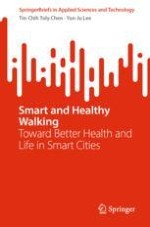2024 | OriginalPaper | Buchkapitel
4. Smart Gait Healthcare Applications: Walking Status and Gait Biometrics
verfasst von : Tin-Chih Toly Chen, Yun-Ju Lee
Erschienen in: Smart and Healthy Walking
Verlag: Springer Nature Switzerland
Aktivieren Sie unsere intelligente Suche, um passende Fachinhalte oder Patente zu finden.
Wählen Sie Textabschnitte aus um mit Künstlicher Intelligenz passenden Patente zu finden. powered by
Markieren Sie Textabschnitte, um KI-gestützt weitere passende Inhalte zu finden. powered by
